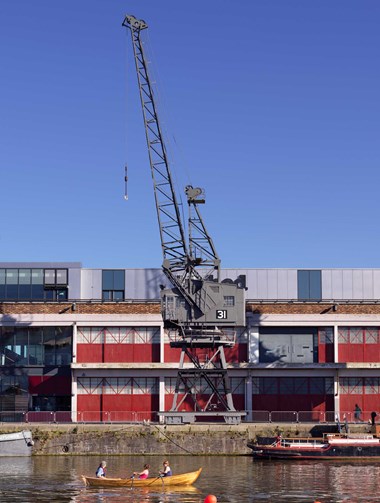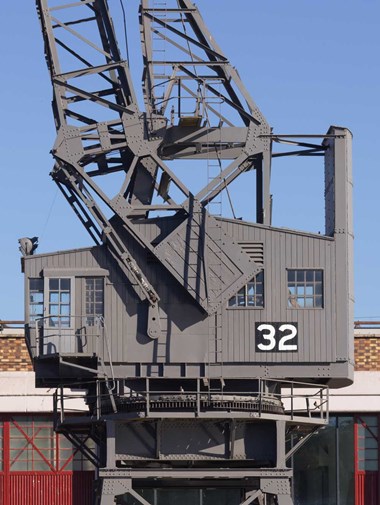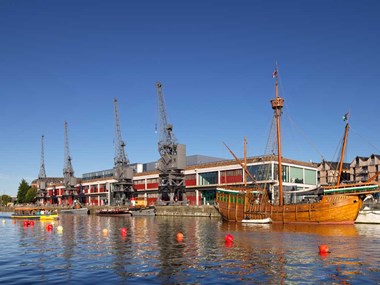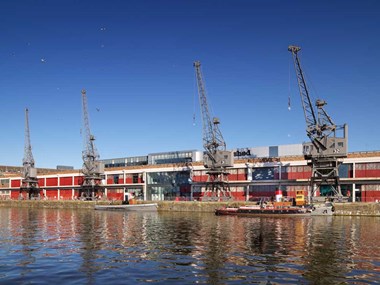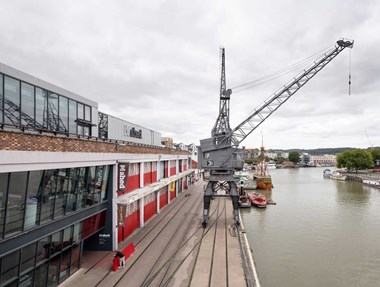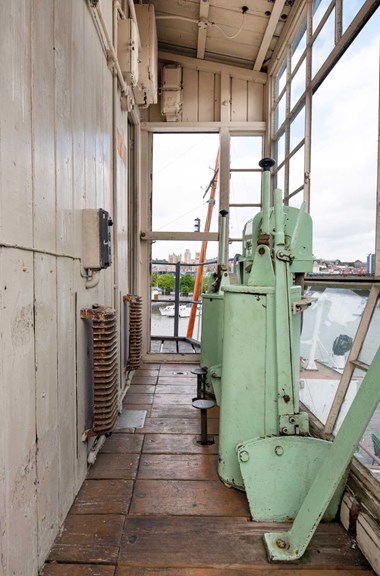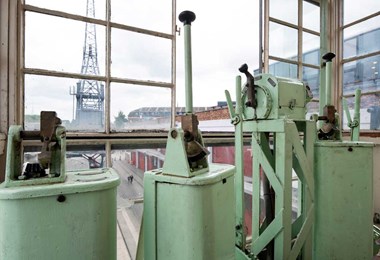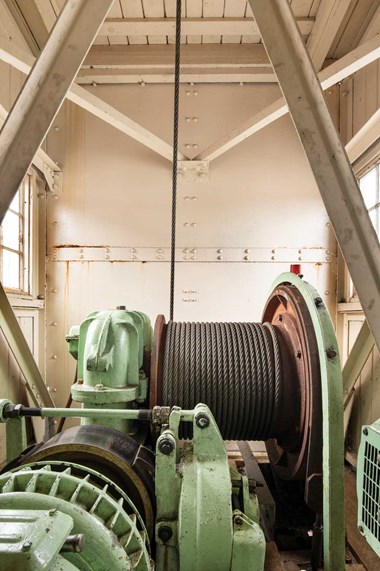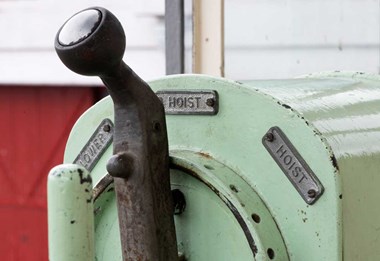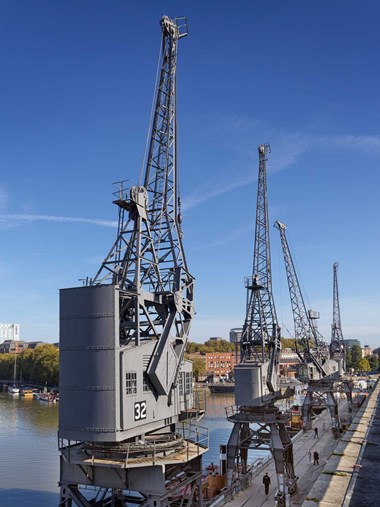Princes Wharf Cranes in Bristol Are Listed
Built in 1951, the cranes and rails on Princes Wharf served the newly built L and M sheds, and are an important reminder of how trading at the docks helped Bristol to prosper. They have been listed at Grade II by the Department for Digital, Culture, Media and Sport on Historic England's advice.
Gallery
Please click on the gallery images to enlarge.
Prince’s Wharf was the final cargo wharf to remain in use before the docks closed in 1977. The last trading ship from the Baltics off-loaded timber at the wharf in November 1974.
For years a twice-weekly service ran between the Wharf and Dublin, exporting English Fergusson tractors and importing everyday items such as bacon, cabbage, butter and tanks of Guinness.
The cranes are the second largest group of historic cranes in the country made by Stothert and Pitt of Bath, known as the ‘crane-makers to the world’ and leaders in the industry in the 19th and 20th centuries.
The largest group of 14 Stothert and Pitt cranes is located at London’s Royal Victoria Dock. At one point in time, almost every port in the world had Stothert and Pitt cranes.
A landmark on Bristol’s harbourside, the cranes are an important link to the city’s 1950s trading heyday and symbolic of the area’s transition between industrial landscape to internationally recognised tourist attraction today. We’re thrilled that they have become Grade II listed and their significance has been recognised by Historic England in this way. The four metal giants are the largest objects in M Shed’s collection and could perhaps rival the Clifton Suspension Bridge for the most photographed sight in the city!
Following bomb damage to Prince’s Wharf in the Second World War, it was renovated to become a modern general cargo wharf. The L and M transit sheds (now the M Shed Museum) were built, shortly followed by eight cranes – numbered 25 to 32. These cranes enabled the swift loading and unloading of cargo ships onto wagons and into what is now the M Shed Museum.
The imposing cranes are the only group of Stothert and Pitt travelling cranes known to be in working order. They could stand at a variety of different heights dependent on the angle of the jib which stood at 20m. Of the eight cranes, seven of them could lift three tonnes whilst crane number 32 could handle up to 10 tonnes of cargo.
The cranes contained a driver’s cab, motor room and two pairs of legs. Each pair of legs had driving wheels on either side powering the lateral movement of the cranes along the rails.
The four cranes are now in the ownership of Bristol City Council and form part of Bristol Museums’ collection. When the docks closed in 1975, the redundant eight cranes were sold for scrap. City Docks Ventures helped to raise funds to save two of the cranes from the scrapyard and Bristol City Council decided to purchase two others.
An earlier Stothert and Pitt steam crane, Fairbairn Crane, located near Princes Wharf, is Grade II* listed and a scheduled monument.
It’s wonderful news that the cranes, which have formed part of Bristol’s distinctive skyline since 1951, have been listed at Grade II. The cranes stand as a proud reminder of the role Prince’s Wharf, and the rest of the city’s industrial heritage played, in shaping the social, economic and cultural fabrics of not only the UK but the world. The four cranes have become unique and fascinating exhibits in M Shed Museum’s collection, attracting visitors from all over the world. The protection of the cranes as structures of special interest means that Bristol’s industrial past can continue to be retold for generations to come.


